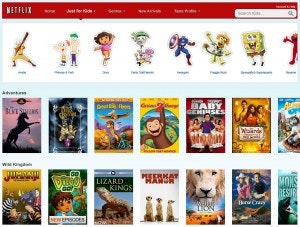The online-streaming business was one of the reasons Blockbuster, once a rental giant, filed for bankruptcy in 2010. The online-streaming business, which is focused on movies and game rentals, is a relatively new technology that has been gaining notoriety and customers in recent years.
What’s online streaming and who are the industry leaders?
Online streaming is a term that refers to multimedia content being delivered over the Internet to end customers but not downloaded as general content. This gives users the advantage of enjoying that content instantly with only an Internet connection. This offers users the benefit of not having to return any physical movie. Since barriers to entry are not huge, the market has become extremely competitive.
Some of the current industry leaders in the rental business are Netflix, Inc. (NASDAQ:NFLX), Redbox, which is a Coinstar, Inc. (NASDAQ:CSTR) subsidiary, and Amazon.com, Inc. (NASDAQ:AMZN) with its Amazon Instant Video.
There are other players such as Hulu, (owned by News Corp (NASDAQ:NWSA) and The Walt Disney Company (NYSE:DIS)), and Google Inc (NASDAQ:GOOG)’s YouTube, but let’s focus on our three main players.
Market strategies and advantages

The company has 36-million subscribers, and posted increasing revenue through the last few quarters of 2012.
The company’s operating income, however, was $32 million, while net income in the period came in at a mere $3 million. This exhibits the problems the company has with increasing global operating costs. However, that is a massive revenue generation if compared to the peer companies: Redbox generated revenue of $488 million during the fourth quarter of 2012.
Redbox has more customers than Netflix, Inc. (NASDAQ:NFLX), reaching 42 million viewers, but its business model differs. The company is similar to Blockbuster but it offers DVDs and games physically with a kiosk network placed at strategic locations such as malls or other stores. This way, the company saves a lot in operating costs compared to Blockbuster.
As mentioned before, the company’s revenue for the last quarter of 2012 was less than half of what Netflix, Inc. (NASDAQ:NFLX) posted. Another positive aspect about the company is that it’s venturing into the online-streaming business with Redbox Instant, a joint venture with Verizon Communications Inc. (NYSE:VZ).
Amazon.com, Inc. (NASDAQ:AMZN) is a very elusive company for analysis. Why? Because it hides information about its segment results and other key data. I estimate Amazon has 10 million “Prime”” members, who pay an annual fee of around $80 to access books and online videos by streaming. The advantage over Netflix is that customers can download the content and view it offline.
Amazon.com, Inc. (NASDAQ:AMZN)’s combined marketplace includes different offerings: movies, TV shows, digital books, online streaming and unparalleled free two day shipping service for $79 a year, less than Netflix, Inc. (NASDAQ:NFLX)’s $96 a year. This “combined marketplace” theme is a great advantage that Amazon enjoys over its competitors. But, since Amazon.com, Inc. (NASDAQ:AMZN) does not disclose detailed information about its segments, there is no way of determining what exactly is the impact or the number of subscribers.

